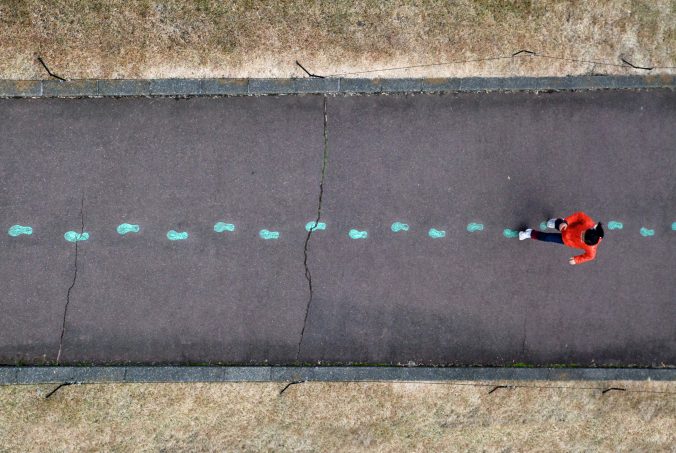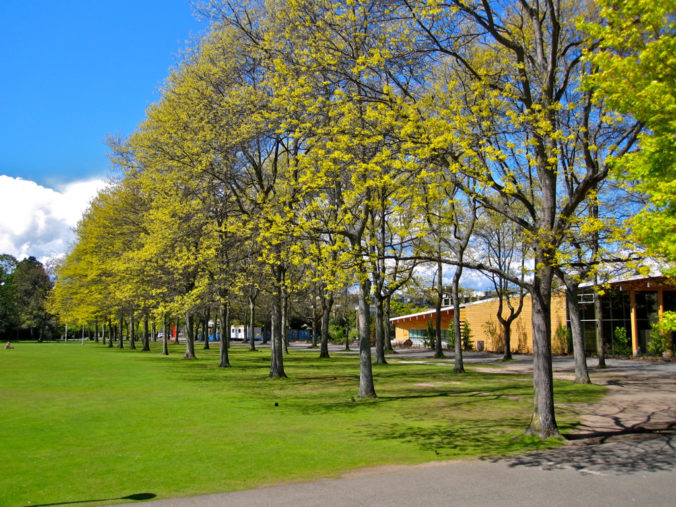Engaging with a public audience in the media can be like riding a rollercoaster – thrilling, but with its fair share of twists and turns, especially for public figures or individuals in positions of trust like educators, lawyers, or government officials. Regular engagement can help in establishing trust and authority within a community or industry, enhancing the credibility of the individual and their organization. However, the internet can be a wild jungle, and once you step into it, you’re fair game for all sorts of criticism and trolling. Brace yourself for some keyboard warriors who might not always play nice.Handling negative replies and critiques on social media, especially when they touch upon your personal values and your employer’s social media policy, requires a delicate balance. Start by acknowledging the negative reply or critique, showing that you’ve seen it and taken it seriously. Emphasize how your response aligns with both your personal values and your employer’s social media policy, demonstrating professionalism and consistency. Having a Personal Learning Network that values media literacy offers several benefits. PLN that values media literacy not only equips individuals with essential skills for navigating the digital landscape but also promotes a culture of informed, responsible citizenship in an increasingly mediated world.
In today’s diverse and interconnected world, the importance of inclusion in professional settings cannot be overstated.Inclusive workplaces not only foster a sense of belonging but also harness the collective power of diverse perspectives, leading to innovation and growth. Social media platforms have emerged as powerful tools for fostering inclusion and building professional learning network (PLN) that reflect the diversity of our society. For example, my major is economics, and identifying key players in the field of economics is important. These could include economists, academics, policymakers, journalists, and thought leaders. Look for individuals who are active on social media platforms and have a significant following or influence in the economics community. Pay attention to the content they share and engage with, as well as the conversations they participate in. In addition, Twitter chats are a great way to connect with professionals and engage in real-time conversations. Find Twitter chats related to economics using relevant hashtags such as #EconTwitter or #Economics and participate regularly to build relationships and expand my network. Furthermore, I will engage with the content shared by network by liking, commenting, and sharing relevant posts. This is very helpful to establish myself as an active member of the community and also fosters connections with other professionals. By following these steps, I can effectively build a Professional Learning Network. I think it will help me establish myself as a trusted voice in the economics community.
Student are using several digital platforms to develop their professional networks. LinkedIn is a professional networking platform that allows students to connect with professionals, join industry groups, and showcase their academic and extracurricular achievements. And also Twitter is widely used by students to follow professionals, industry influencers, and organizations in their field of study. Some student groups and organizations use Slack for communication and collaboration. Expanding a professional learning network is a valuable endeavor for students, providing opportunities for mentorship, collaboration, and career advancement. Student should clarify their professional goals and the specific objectives you aim to achieve through networking. And identify and join professional associations related to your field of study or career interests. Data privacy and security play crucial roles in shaping the dynamics of a Personal Learning Network. Concerns about data privacy may lead individuals to be hesitant about sharing personal information, limiting the depth of connections within a PLN. Some individuals may be hesitant to adopt collaborative tools or platforms due to privacy and security concerns. Consider creating a digital identity, I will complete LinkedIn profile with a professional photo, a compelling headline, a comprehensive summary. Moreover, Connect with classmates, and mentors. Building a diverse network enhances my digital identity. My social media profiles showcase a professional photo, with well-curated content, and a bio highlighting my interests. Employers may see me as someone who understands the importance of maintaining a professional image and is likely to represent the company well.
Identity is “what it means to be who one is including the qualities and beliefs, distinguishing a person or a group from others.” A digital identity refers to the unique representation of an individual or organization online. Digital identities are used across various online platforms and services, including social media, e-commerce, banking, healthcare, and more. And personal and professional approaches to digital identity have distinct impacts on how individuals engage with social media platforms. The lines between personal and professional identities can sometimes blur in the digital realm, influencing the content shared, connections made, and the overall online presence. Networked publics refer to spaces where people connect, communicate, and share information through digital means. The convergence of digital identities in these spaces has several impacts and benefits, Individuals can find like-minded peers, access valuable resources, and engage in discussions that contribute to personal and professional development. And individuals and groups can leverage the collective power of networked publics to raise awareness. My digital identity is dynamic and can evolve over time. There are many new apps and technologies on the Internet. The presence on social media platforms like Facebook, Twitter, Instagram, or LinkedIn contributes significantly to my digital identity. This includes the content I share, my interactions, and the communities I engage with. I will express my opinions while engaging with others and learning about their digital identities. On the other hand, I noticed it’s crucial for me to be mindful of my digital presence, considering both personal and professional aspects. As I transition from student life to the professional world, my digital identity can play a significant role in shaping opportunities and connections in my chosen field.
Social media platforms provide a virtual space for people to create and share content, engage in conversations, and build relationships. Networking on social media serves various purposes, both personal and professional, and involves activities such as building connections, information sharing, engagement and interaction. Participation in networked publics is motivated by a combination of intrinsic and extrinsic factors. Humans are social beings, and the desire for connection drives participation in networked publics. Online platforms offer individuals a space to express themselves and showcase their identity. And many people participate in networked publics for entertainment purposes. For example, I like playing games, so I like to share my experiences and make friends in the gaming community. And I also can participate in online communities to explore new interests, discover diverse perspectives. Public communications, especially in online spaces, come with both risks and rewards. Sharing personal information in public communications may lead to privacy breaches, identity theft. And also public communications have the potential to damage personal or organizational reputations through negative comments, misinformation. However, public communications can contribute to the creation of online communities where individuals can find support, share experiences, and connect with like-minded people. And also rapid dissemination of information to raise awareness. Public communications in the digital age come with a dual nature of risks and rewards, we have to balancing these factors and for better public communication.
My name is Bei Zhao, this is my third year at the University of Victoria. I studied economics. I chose this course because I want to develop my interests in various aspects.
Before proceeding with this first blog post, we expect you to consider your privacy preferences carefully and that you have considered the following options:
- Do you want to be online vs. offline?
- Do you want to use your name (or part thereof) vs. a pseudonym (e.g., West Coast Teacher)?
- Do you want to have your blog public vs. private? (Note, you can set individual blog posts private or password protected or have an entire blog set to private)
- Have you considered whether you are posting within or outside of Canada? This blog on opened.ca is hosted within Canada. That said, any public blog posts can have its content aggregated/curated onto social networks outside of Canada.
First tasks you might explore with your new blog:
- Go into its admin panel found by adding /wp-admin at the end of your blog’s URL
- Add new category or tags to organize your blog posts – found under “Posts” (but do not remove the pre-existing “edci338” category).
- See if your blog posts are appearing on the course website (you must have the the edci338 category assigned to a post first and have provided your instructor with your blog URL)
- Add pages, if you like.
- Include hyperlinks in your posts (select text and click on the link icon in the post toolbar)
- Embed images or set featured images and embed video in blog posts and pages (can be your own media or that found on the internet, but consider free or creative commons licensed works). To embed a YouTube video, simply paste the URL on its own line.
- Under Dashboard/Appearance,
- Select your preferred website theme and customize to your preferences (New title, new header image, etc.)
- Customize menus & navigation
- Use widgets to customize blog content and features
- Delete this starter post (or switch it to draft status if you want to keep it for reference)
Do consider creating categories for each course that you take should you wish to document your learning (or from professional learning activities outside of formal courses). Keep note, however, that you may wish to rename the label of the course category in menus (e.g., as we did where it shows “Social Media & PL” as the label for the “edci338” category menu. This will enable readers not familiar with university course numbers to understand what to expect in the contents.
Lastly, as always, be aware of the FIPPA as it relates to privacy and share only those names/images that you have consent to use or are otherwise public figures. When in doubt, ask us.
Please also review the resources from our course website for getting started with blogging:
- WordPress resources
- Using RSS feeds to read blog posts from your networks (e.g., Feedly)
- Privacy resources
- Copyright resources
- Finding images you can use
This post will appear in a few places:
- in the blog feed on the front of your website
- in the Learning Design menu on your website. This is because we have applied the “edci338” category to this post and the menu item “Social Media & Personalized Learning” has been created from the category “edci338.” For every post you make for this course, please assign the “edci338” category to it. You are welcome to use this blog for your personal hobbies or for other courses, in which case, you could create additional menu items and categories for them.
- if you give permission, your posts categorized “edci338” will be aggregated onto the Blog Feed on the EDCI 338 Course Website.
Feel free to delete this post once you understand this. If you have any questions, please reach out to your instructor.



Recent Comments